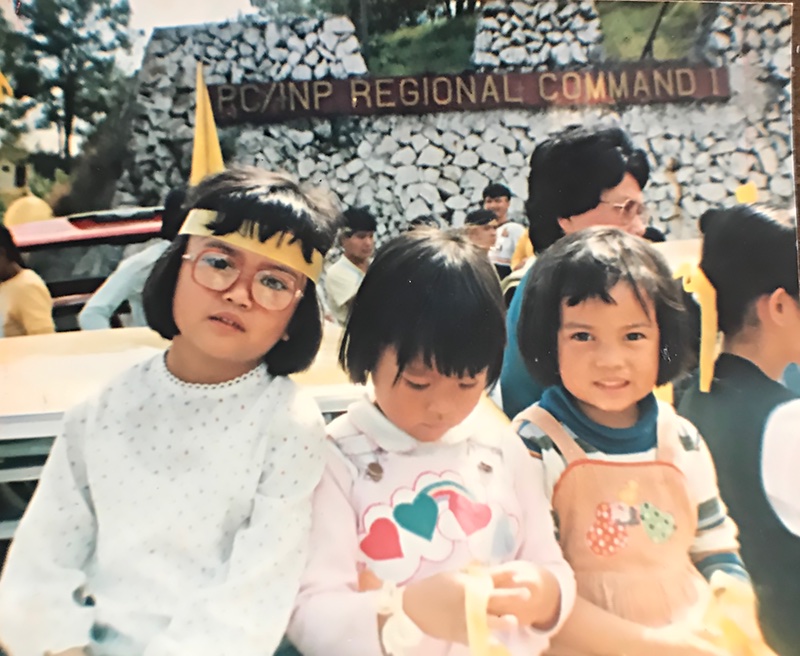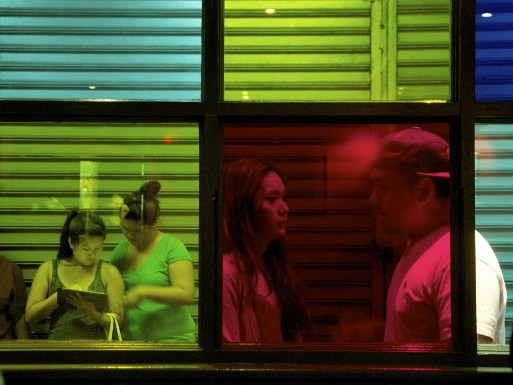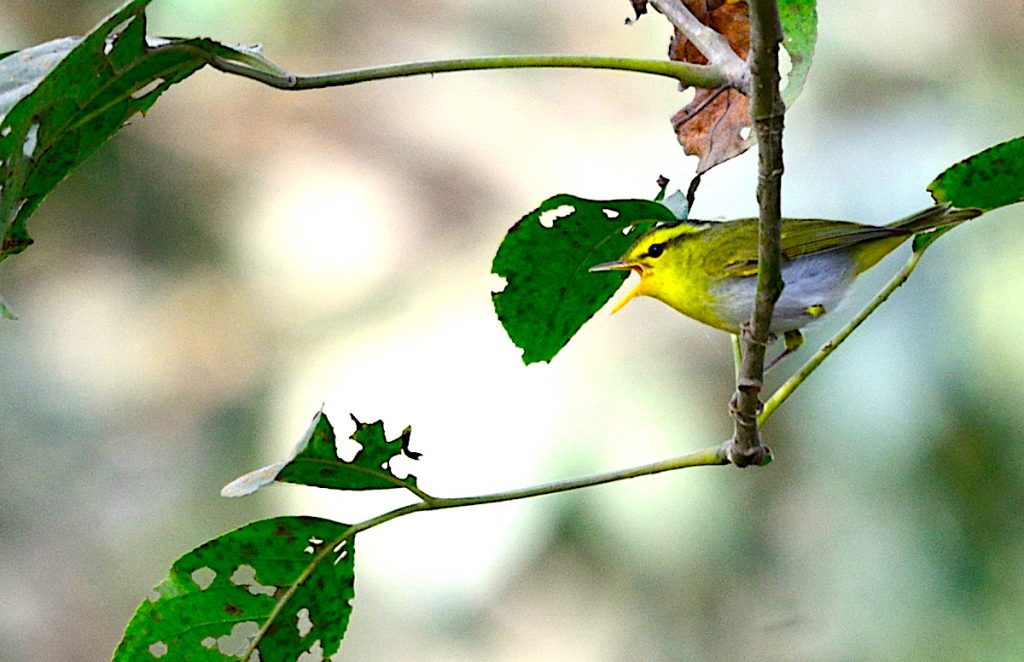Creating a life in the shadow of the martial law years
September 23, 2022
The following essay is part of the notebook Against Forgetting, with art by Neil Doloricon.
“Ang liwanag ay kinakailangan ng mata upang mapagwari ang buong katunayan ng mga bagay-bagay. . . . Ating hanapin ang liwanag.”
“The eyes need light to behold the true nature of things. . . . Let us seek light.”
—Emilio Jacinto, “Liwanag at Dilim” (1896)
One evening in October 2012, a cousin and I met up in Manhattan’s East Village at Anthology Film Archives, which was hosting a retrospective of work by filmmaker Kidlat Tahimik, a National Artist of the Philippines from our ancestral hometown of Baguio City. We were there to see Bakit Dilaw ang Gitna ng Bahaghari? (Why Is Yellow the Middle of the Rainbow), a documentary collage of personal and political events that the filmmaker and his late eldest son (also named Kidlat) witnessed between 1984 and 1994, including the 1986 People Power Revolution in Baguio.
My memories of childhood in Baguio are like technicolor film stills—so surreal and fragmentary, I’m uncertain they ever happened. Watching Bakit Dilaw ang Gitna ng Bahaghari? for the first time substantiated those sense-memories. For instance, in one scene, the younger Kidlat is relegated indoors during a bagyo (typhoon). I instantly recalled what it was like to at once fear and be awed by nature’s power—the wind howling like a chorus of angry ghosts; mountain roads turning into rushing cascades that dragged away fallen limbs of pine, eucalyptus, and balete trees.

The film also provided crucial context for some of my earliest memories. To this day, I can picture a children’s party I attended when I was about six years old. There was a pine forest canopy, golden afternoon light, a puppet theater, children running around with eggs. My mind had filed it away as an Easter egg hunt. I experienced déjà vu forty-one minutes into Bakit Dilaw ang Gitna ng Bahaghari? when that very memory came to life onscreen. But rather than an Easter egg hunt, the event was the November 1985 Sunflower People’s Protest—a picnic honoring former Senator Benigno “Ninoy” Aquino (assassinated leader of the opposition against the dictator Ferdinand Marcos, Sr.) and his widow, Corazon “Cory” Aquino, who had decided to run for president against Marcos.
Then, about an hour and eleven minutes into the documentary, I was jolted out of my seat. The camera had panned across a boisterous crowd in front of Baguio Cathedral (also known as the “miracle church” for sheltering thousands of refugees when the U.S. Air Force carpet-bombed the city during World War II). For a brief second, decades-younger versions of my mother, younger sister, cousin, and me flashed on the big screen. We were raising our thumbs and index fingers in an “L” shape to signify “laban” (“fight” in Tagalog and also the opposition party’s name), and in my other hand, I was waving a yellow flag—the color of the opposition.
I’ve previously seen photographs of our young family protesting in front of Camp Dangwa (the regional headquarters of the Philippine Constabulary, whose generals remained loyal to Marcos) and at the hilltop cathedral where civilian rebels and police and military defectors gathered (an evening broadcast on February 22, 1986 by Radio Veritas helped organize rallies that spread over the course of the week).

But the moving images resurrected long-buried memories, such as the sound of tanks and trucks rumbling on gravel roads. I had never seen a military convoy in our town before. At one point, my mother asked me to approach a soldier standing before a tank and hand him a yellow ribbon (the fact that Lieutenant Benjamin Magalong’s detachment from Buguias were defectors and on our side escaped my understanding as a seven-year-old). It wasn’t elation I felt but confusion and terror instead.
When I was old enough to grasp how tenuous the situation was—how protests around the country potentially could have turned violent on the dictator Marcos’s command—I became angry about my parents’ decision to bring their children into it. Our local paper The Philippine Star reprinted an excerpt of the February 26, 1986, entry in my father’s diary, which reflected his thinking at the time:
“We have been chased by fear, hatred, and anger … We were led from one deception to another … But God did send us His strength (to enable us to) take the first courageous step to move forward, ready to lay down our lives for our children …”
It was only as an adult—when I joined protests and lobbying efforts during the Trump and Duterte administrations to safeguard the human rights of members of my community in the United States and in the Philippines—that I began to relate with my then-thirty-three-year-old parents. Their existential dread, living under an authoritarian regime for twenty years. Their sense of abandonment by a so-called democratic political system that nevertheless reinforced the status quo among the haves and have-nots. The realization that the future was worth fighting for and that change could only come from everyday Filipinos, from a people-powered movement.
Nearly four decades after the 1986 People Power Revolution toppled the elder Marcos’s dictatorship, his son Ferdinand “Bongbong“ Marcos Jr. has ascended to the presidency. The new vice president, Sara Duterte-Carpio, is the daughter of recent president Rodrigo Duterte, whose administration is under investigation by the International Criminal Court for extrajudicial killings and other human rights abuses in its “War on Drugs.” In all that time, there has been a systemic revision of the history of the Marcos dictatorship and the martial law era (formally 1972–1981, although my parents argue that in practice, it ended with the fall of the dictatorship in 1986).
Survivors of the dictatorship and martial law are now being gaslit by Marcos-Duterte troll farms and stans who claim that not a single person was arrested, disappeared, or killed for their political opposition to the elder Marcos (when thousands were, according to both Amnesty International and Human Rights Watch). They also circulate conflicting conspiracy theories about the 1986 People Power Revolution—that it was “fake” and that it was the CIA and the Vatican, rather than the Filipino people, who were behind it. Survivors are also retraumatized by having to retell stories about their lived experiences, which have been erased from history books or banned under the Duterte-era Anti-Terror Act.
The thing is, for as much as revisionists deny and try to expunge the truth, survivors embody and bear the scars of their cumulative trauma from Marcos’s two-decade authoritarian regime. My parents were high school freshmen when Marcos won his first term as president in 1965. He had initially declined to send Philippine forces to Vietnam during the war but reversed course once he recognized the lucrative arrangement of collecting U.S. military aid (much of it discretionary and therefore susceptible to graft) in exchange for “fighting communists” abroad and at home.
The rising cost of living and unemployment for average Filipinos funneled workers into the construction industry for Imelda and Ferdinand Marcos’s many debt-funded infrastructure projects or, in the case of my maternal grandfather Lolo Pedong, to join the tens of thousands of military personnel in Vietnam. For most of her high school and college years, my mother rarely saw her father, who was employed as a payroll clerk for the U.S. Army in Vietnam from 1966–1972. She cherished the few Christmases he was able to take time off from work to visit his family.

Meanwhile, 1969 was a turning point for my father. Just shortly before he entered freshman year in college, a high school teacher and mentor took him along with a group of local reporters and community leaders to the town of Bantay, Ilocos Sur in the northern Philippines. Vincent “Bingbong” Crisologo, who like Marcos Sr. and Jr. was a scion of a powerful political family in Ilocos, had set fire to and razed two barrios (districts) for supporting his mother’s political opponent and the eventual victor of the gubernatorial race there (Luis “Chavit” Singson, also Crisologo’s cousin).
“I skipped classes to join demonstrations to bring the crime to national attention, bring the culprits to court, and joined hundreds of volunteers in channeling relief and rehabilitation resources to the victims. I felt useful, important, relevant, and was living dangerously,” my father said. “This event pulled me out of my middle-class narcissism. Middle-class dreams often look far into the future. Working with the poor, the reality of the here-and-now just hit me squarely.” Crisologo eventually was convicted of arson and began serving jail time in 1972 before being granted absolute pardon by Marcos, Sr. in 1980.
Upon the declaration of martial law in September 1972, my mother’s dorm at St. Luke’s College of Nursing in Manila was raided and shut down for the rest of the semester. She returned home to Baguio until classes resumed. A few months later, my father was arrested and interrogated at the headquarters of the Philippine Constabulary—the infamous Camp Crame on EDSA in Manila. It was then he realized that officials had kept dossiers on members of student organizations for at least five years before the official declaration of martial law. “Anyone who worked with the youth or the poor was red-tagged as a communist,” my father explained—it’s a phenomenon that persists today.
Both my parents graduated later than planned in 1975. My father gave up on pursuing law school because there was “no law to talk about” and instead became a community organizer then a sociology professor at the University of the Philippines-Baguio. My parents married in 1977, and I was born in 1979 at the tail-end of the martial law years.
While it’s striking that my parents managed to give me some semblance of a “normal” childhood despite everything that was going on, the traumatic legacy of Marcos and martial law reverberates years later, even a continent away. Perhaps this is why life in the Philippines, compared to life since moving to New York City in 1992, seems like a faraway dream/nightmare or a film to me—the stakes had always been much higher there.
When I think about who I am today, I realize just how much I have been shaped by the martial law years. If my father had been able to pursue the law and had an economically viable career in the Philippines—or if Marcos actually had stewarded the economy rather than outsourced job creation to wealthy countries keen on exploiting labor from poor countries—would my mother have stayed, instead of leaving us behind for four years for a nursing job at the height of the AIDS crisis in New York? If my social and political consciousness had not been awakened at an early age, would I have been complacent in my Filipina American “middle-class narcissism” and not joined the diasporic movement for democracy and against fascism in the Philippines?
I first learned about the international Malaya Movement in June 2018 as one of the four hundred participants in their March for Democracy and Human Rights in the Philippines and the staged “die-in” to draw attention to the extrajudicial killings under the authoritarian Duterte regime. The protest march countered the otherwise festive, culturally focused atmosphere at the annual Philippine Independence Day Parade. The first thing I noticed was the preponderance of young Filipinx Americans and creative people in the crowd, including AAWW Senior Editor Noel Pangilinan; children’s book publisher Christina Newhard; writers Gina Apostol, Luis H. Francia, and Nita Noveno; and artist Carina Evangelista.
In a recent interview with Francia about his satirical play The Strange Case of Citizen de la Cruz, produced by the Atlantic Pacific Theater for the Ice Factory Festival at the New Ohio Theater last month, I asked him what role or responsibility art and literature have to the world and the people it engages with.
Especially considering that he’s also a journalist, Francia’s response was provocative: “As an artist and a writer, my primary duty is to the truth that I see. . . In a way, I view artists as truth-tellers. If you tell the truth in a straightforward way, people won’t listen. But they will listen if there’s a story, a metaphor, if there’s song, if there’s dance.”
In today’s world where, as Nobel Peace Prize–winning Filipina journalist Maria Ressa points out, “lies laced with anger and hate spread faster and further than facts,” perhaps art and literature are what can make truth irresistible.

Since the march in 2018, I became involved as one of the northeast regional coordinators for Malaya and represent the organization in the coalition New York for the Philippine Human Rights Act (NY4PHRA). There are times when I question whether I might be doing more harm than good speaking out from the diaspora, whether it might even be neocolonialist to call out the breakdown of democracy and human rights in the Philippines when the same thing has been happening in the U.S., arguably since its “founding.”
But over the years, in meetings with Philippines-based activists like Karapatan’s Cristina Palabay and Gabriela’s Joms Salvador, I’m reminded that speaking out and drawing the international community’s attention to what’s happening in the Philippines isn’t just our privilege but our responsibility as diasporic Filipinos. This was true in the martial law era, the Duterte era, and now the Bongbong Marcos era. A question that often comes up in these meetings is what we outside the Philippines can do to help. Repeatedly, we are asked to keep amplifying the work of journalists, community organizers, and activists in the Philippines whose voices are being suppressed through government crackdowns and policies such as the draconian 2020 Anti-Terror Act, designed to curtail political dissent.
I would argue, though, that all Americans, not just Filipinx Americans, have a responsibility to hold our own government accountable regarding its foreign policy in the Philippines. Despite the documented 72,000 imprisoned, 34,000 tortured, and 3,240 killed during martial law, the Kennedy, Johnson, Nixon, and Reagan administrations bolstered the Marcos dictatorship with U.S. aid totaling $2.8 billion ($900 million of which was military aid) plus nearly $1 billion in loans.
Despite the documented 7,884 killed in police operations and the 27,000-30,000 extrajudicial killings (including of peasants, indigenous and Moro/indigenous Muslim people, government employees, human rights workers, youth/students, environmentalists, and faith leaders), the U.S. provided over $600 million in aid to the Philippine military and police since Duterte came into power in 2016. And in 2020—around the time Duterte claimed his administration had run out of COVID-19 relief funds—the U.S. announced over $2.1 million in arms sales to the Philippines for items including hellfire missiles, attack helicopters, assault boats, and armaments.
If you’re outraged that your taxes have been funding state-sanctioned violence and human rights abuses around the world, join Malaya and other diasporic organizations demanding accountability for how U.S. taxpayer dollars are being spent. Through advocacy and lobbying efforts, the Philippine Human Rights Act (PHRA) was reintroduced in the U.S. Congress in June by Rep. Susan Wild (PA) and currently is co-sponsored by thirty-six members of Congress.
The PHRA would limit U.S. assistance to the police or military of the Philippines until the government has taken certain actions, including “(1) investigating and successfully prosecuting members of its military and police forces who have violated human rights, (2) withdrawing the military from domestic policing activities, and (3) establishing that it effectively protects the rights of journalists and civil society activists.” It also would charge the U.S. president to “direct U.S. representatives at multilateral development banks to vote against providing loans to the police or military of the Philippines.”
I never imagined I would follow in my parents’ footsteps—leaving behind a well-paying career as a fundraiser to “live dangerously” as a writer, artist, and human rights activist in the Filipinx diaspora. But somewhere along the way, I realized that freedom of expression is a privilege. If we don’t use it to uplift those less advantaged than us, we are complicit in a system that confers human dignity for just a few in society.
As we witness the return of the Marcos and Duterte dynasties to Malacañang, it’s critical to remember the martial law years, particularly its lessons. To remember is to know how to live our fullest, our freest. It may be frustrating to find ourselves fighting the same battles fifty years later, but ultimately, it’s an honor to continue our parents’ and ancestors’ work to instill hope and light the way toward a better future for the generations that come after us.



